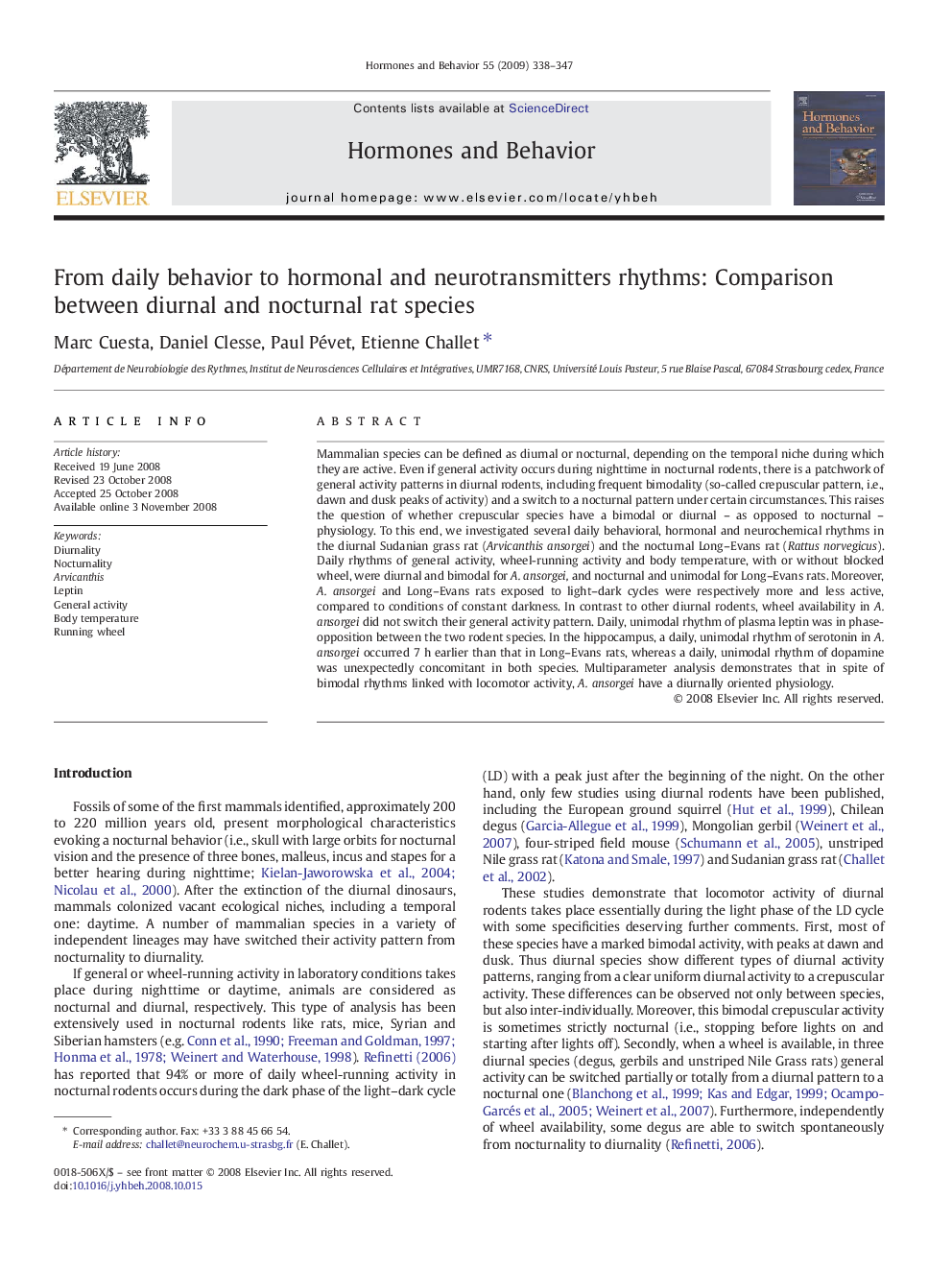| کد مقاله | کد نشریه | سال انتشار | مقاله انگلیسی | نسخه تمام متن |
|---|---|---|---|---|
| 323226 | 540531 | 2009 | 10 صفحه PDF | دانلود رایگان |

Mammalian species can be defined as diurnal or nocturnal, depending on the temporal niche during which they are active. Even if general activity occurs during nighttime in nocturnal rodents, there is a patchwork of general activity patterns in diurnal rodents, including frequent bimodality (so-called crepuscular pattern, i.e., dawn and dusk peaks of activity) and a switch to a nocturnal pattern under certain circumstances. This raises the question of whether crepuscular species have a bimodal or diurnal – as opposed to nocturnal – physiology. To this end, we investigated several daily behavioral, hormonal and neurochemical rhythms in the diurnal Sudanian grass rat (Arvicanthis ansorgei) and the nocturnal Long–Evans rat (Rattus norvegicus). Daily rhythms of general activity, wheel-running activity and body temperature, with or without blocked wheel, were diurnal and bimodal for A. ansorgei, and nocturnal and unimodal for Long–Evans rats. Moreover, A. ansorgei and Long–Evans rats exposed to light–dark cycles were respectively more and less active, compared to conditions of constant darkness. In contrast to other diurnal rodents, wheel availability in A. ansorgei did not switch their general activity pattern. Daily, unimodal rhythm of plasma leptin was in phase-opposition between the two rodent species. In the hippocampus, a daily, unimodal rhythm of serotonin in A. ansorgei occurred 7 h earlier than that in Long–Evans rats, whereas a daily, unimodal rhythm of dopamine was unexpectedly concomitant in both species. Multiparameter analysis demonstrates that in spite of bimodal rhythms linked with locomotor activity, A. ansorgei have a diurnally oriented physiology.
Journal: Hormones and Behavior - Volume 55, Issue 2, February 2009, Pages 338–347